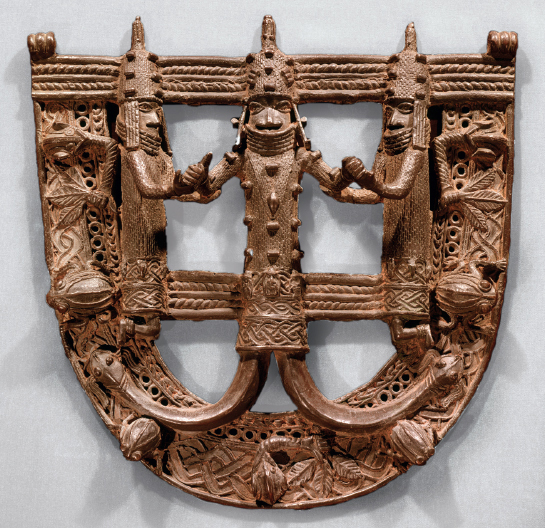Understanding World Societies:
Printed Page 584
> What different types of economic, social, and political structures were found in the kingdoms and states along the west coast and in the Sudan?

The Oba of Benin
The oba’s palace walls were decorated with bronze plaques that date from about the sixteenth to eighteenth centuries. This plaque vividly conveys the oba’s power, majesty, and authority. The two attendants holding his arms also imply that the oba needs the support of his people. The oba’s legs are mudfish, which represent fertility, peace, well-being, and prosperity, but their elongation, suggesting electric eels, relates the oba’s terrifying and awesome power to the eel’s jolting shock. (National Museum, Lagos, Nigeria/photo: André Held/akg-images)
The oba’s palace walls were decorated with bronze plaques that date from about the sixteenth to eighteenth centuries. This plaque vividly conveys the oba’s power, majesty, and authority. The two attendants holding his arms also imply that the oba needs the support of his people. The oba’s legs are mudfish, which represent fertility, peace, well-
IIN MID-